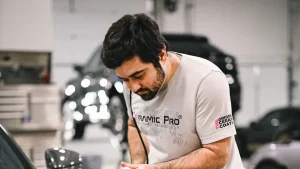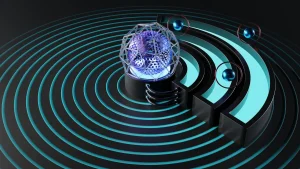Selecting the right MOCVD Heater plays a crucial role in semiconductor manufacturing. The choice impacts efficiency, cost, and product quality. Among the top contenders, the VET-M3, Agnitron A Series, and Long-life SiC Coated Graphite Heater stand out. Each offers unique features and benefits tailored to specific applications. This comparison aims to guide readers in making informed decisions based on detailed specifications and application needs, ensuring optimal performance and value in their manufacturing processes.

Key Takeaways
- Choosing the right MOCVD Heater is crucial for optimizing efficiency, cost, and product quality in semiconductor manufacturing.
- The VET-M3 MOCVD Heater is ideal for LED and solar cell production due to its high efficiency, durability, and wide temperature range.
- Agnitron A Series MOCVD Heater excels in precision and energy efficiency, making it suitable for III-V alloy-based materials and opto-electronic components.
- The Long-life SiC Coated Graphite Heater offers cost-effectiveness and versatility, making it a practical choice for general semiconductor manufacturing.
- Consider maintenance requirements and initial costs when selecting a heater, as these factors can impact long-term operational efficiency.
- Evaluate specific application needs, such as temperature range and material compatibility, to ensure the selected heater meets production requirements.
Heater Option 1: VET-M3 MOCVD Heater
Specifications
Power Output
The VET-M3 MOCVD Heater delivers a robust power output, ensuring efficient heating for semiconductor processes. It provides consistent energy to maintain optimal temperatures, crucial for precise manufacturing.
Temperature Range
This heater operates within a wide temperature range, accommodating various semiconductor applications. Its ability to maintain stable temperatures enhances process reliability and product quality.
Material Composition
Constructed from high-quality materials, the VET-M3 MOCVD Heater features a composition that ensures durability and performance. The use of advanced materials minimizes wear and extends the heater’s lifespan, making it a reliable choice for manufacturers.
Advantages
Efficiency
The VET-M3 MOCVD Heater excels in efficiency, reducing energy consumption while maintaining high performance. Its design optimizes heat distribution, leading to faster processing times and lower operational costs.
Durability
Durability stands out as a key advantage of the VET-M3. The robust construction and quality materials contribute to its long service life, minimizing downtime and maintenance needs. This reliability makes it a preferred option for continuous production environments.
Disadvantages
Cost
One notable disadvantage of the VET-M3 MOCVD Heater is its cost. The initial investment may be higher compared to other options. However, the long-term benefits often justify the expense for many manufacturers seeking quality and reliability.
Maintenance Requirements
Maintenance requirements for the VET-M3 can be more demanding. Regular upkeep ensures optimal performance, but it may require additional resources and time. Manufacturers must weigh these factors when considering this heater for their operations.
Ideal Use Cases
LED Manufacturing
The VET-M3 MOCVD Heater proves to be an excellent choice for LED manufacturing. Its ability to maintain precise temperature control ensures consistent quality in LED production. Manufacturers benefit from its efficiency, which reduces energy consumption and operational costs. The heater’s robust construction supports continuous operation, making it ideal for high-volume LED manufacturing environments. By utilizing the VET-M3, manufacturers can achieve superior product quality and reliability, essential for meeting industry standards and customer expectations.
Solar Cell Production
In solar cell production, the VET-M3 MOCVD Heater offers significant advantages. Its wide temperature range accommodates the diverse requirements of solar cell manufacturing processes. The heater’s efficiency and durability contribute to reduced production costs and increased throughput. Manufacturers can rely on its consistent performance to produce high-quality solar cells with optimal energy conversion efficiency. The VET-M3’s advanced material composition minimizes wear, ensuring a long service life and reducing maintenance needs. This makes it a valuable asset for solar cell manufacturers aiming to enhance productivity and product quality.
Heater Option 2: Agnitron A Series MOCVD Heater
Specifications
Power Output
The Agnitron A Series MOCVD Heater provides a reliable power output suitable for various semiconductor applications. It ensures consistent energy delivery, which is essential for maintaining the precise conditions required in advanced manufacturing processes.
Temperature Range
This heater operates within a versatile temperature range, accommodating the diverse needs of semiconductor production. Its ability to maintain stable and uniform temperatures enhances the quality and consistency of the final products.
Material Composition
Constructed with high-grade materials, the Agnitron A Series MOCVD Heater boasts a robust composition that ensures longevity and performance. The use of advanced materials minimizes degradation, providing a dependable solution for manufacturers seeking durability.
Advantages
Precision
Precision stands as a hallmark of the Agnitron A Series MOCVD Heater. It offers exceptional control over temperature and power settings, allowing manufacturers to achieve exact specifications. This precision is crucial for producing high-quality semiconductor components.
Energy Consumption
The Agnitron A Series excels in energy efficiency. Its design optimizes power usage, reducing operational costs while maintaining high performance. This efficiency makes it an attractive option for manufacturers looking to minimize energy expenses without compromising on quality.
Disadvantages
Initial Setup Complexity
One challenge associated with the Agnitron A Series MOCVD Heater is its initial setup complexity. The installation process may require specialized knowledge and expertise, potentially increasing the time and resources needed to get the system operational.
Availability
Availability can pose a limitation for the Agnitron A Series. Due to its specialized nature, acquiring this heater might involve longer lead times or limited supplier options. Manufacturers should consider these factors when planning their procurement strategies.
Ideal Use Cases
III-V Alloy-Based Material Systems
The Agnitron A Series MOCVD Heater excels in applications involving III-V alloy-based material systems. Manufacturers working with these complex materials benefit from the heater’s precision and control. The ability to maintain exact temperature settings ensures the production of high-quality semiconductor layers. This precision is crucial for achieving the desired electrical and optical properties in III-V materials. The heater’s robust construction and advanced material composition support the demanding requirements of these systems, making it a preferred choice for manufacturers focused on innovation and quality.
Opto-Electronic Components
In the realm of opto-electronic components, the Agnitron A Series MOCVD Heater offers significant advantages. Its energy-efficient design reduces operational costs while maintaining high performance. This efficiency is vital for manufacturers aiming to produce cost-effective opto-electronic devices. The heater’s ability to deliver consistent power output ensures uniformity in component production, enhancing the reliability and performance of the final products. Manufacturers can rely on the Agnitron A Series to meet the stringent quality standards required in the opto-electronics industry, making it an invaluable asset for those seeking to advance their technological capabilities.
Heater Option 3: Long-life SiC Coated Graphite Heater

Specifications
Power Output
The Long-life SiC Coated Graphite Heater delivers a consistent power output, suitable for various semiconductor manufacturing processes. Its design ensures stable energy delivery, which is crucial for maintaining the precise conditions required in these applications.
Temperature Range
This heater operates within a moderate temperature range. While it may not reach the extremes of some other options, it provides sufficient heat for many standard semiconductor processes. Its ability to maintain consistent temperatures contributes to reliable manufacturing outcomes.
Material Composition
Constructed with a silicon carbide coating over graphite, this heater boasts a robust material composition. The SiC coating enhances durability and performance, protecting the graphite core from wear and extending the heater’s lifespan. This construction makes it a dependable choice for manufacturers seeking longevity and reliability.
Advantages
Cost-Effectiveness
One of the primary advantages of the Long-life SiC Coated Graphite Heater is its cost-effectiveness. It offers a balance between performance and price, making it an attractive option for manufacturers with budget constraints. The initial investment is lower compared to some high-end alternatives, providing a practical solution without compromising essential features.
Versatility
Versatility is another key benefit of this MOCVD Heater. It adapts well to various semiconductor applications, accommodating different process requirements. Its ability to function effectively across multiple scenarios makes it a flexible choice for manufacturers who need a heater that can handle diverse tasks.
Disadvantages
Limited Temperature Range
A notable disadvantage of the Long-life SiC Coated Graphite Heater is its limited temperature range. While it performs well within its operational limits, it may not be suitable for processes requiring extreme temperatures. Manufacturers should consider this limitation when evaluating its suitability for their specific needs.
Lifespan
Despite its durable construction, the lifespan of this heater may not match that of some premium options. The SiC coating provides protection, but over time, wear and tear can affect performance. Regular maintenance and monitoring are necessary to ensure continued reliability and efficiency.
Ideal Use Cases
High-Durability Applications
The Long-life SiC Coated Graphite Heater excels in high-durability applications. Its robust construction and silicon carbide coating provide exceptional resistance to wear and tear. Manufacturers seeking a reliable MOCVD Heater for demanding environments will find this option advantageous. The heater’s ability to withstand harsh conditions ensures consistent performance over extended periods. This durability makes it suitable for industries where equipment longevity is crucial. By choosing this heater, manufacturers can reduce downtime and maintenance costs, enhancing overall productivity.
General Semiconductor Manufacturing
In general semiconductor manufacturing, the Long-life SiC Coated Graphite Heater offers versatility and reliability. Its consistent power output and stable temperature control support a wide range of processes. Manufacturers benefit from its adaptability to various production requirements. The heater’s cost-effectiveness makes it an attractive choice for operations with budget constraints. It provides essential features without compromising performance, making it a practical solution for diverse manufacturing needs. By integrating this heater into their processes, manufacturers can achieve efficient and reliable production outcomes.
Comparison Table
Summary of Key Specifications and Features
To assist readers in evaluating the top MOCVD heater options, the following table summarizes the key specifications and features of each model. This comparison highlights the strengths and limitations of the VET-M3, Agnitron A Series, and Long-life SiC Coated Graphite Heater, providing a clear overview for informed decision-making.
| Feature/Specification | VET-M3 MOCVD Heater | Agnitron A Series MOCVD Heater | Long-life SiC Coated Graphite Heater |
|---|---|---|---|
| Power Output | Robust and consistent | Reliable and suitable | Consistent and stable |
| Temperature Range | Wide range for diverse applications | Versatile and uniform | Moderate and stable |
| Material Composition | High-quality, durable materials | High-grade, robust materials | SiC coating over graphite |
| Efficiency | High efficiency, reduced energy use | Energy-efficient design | Cost-effective performance |
| Durability | Long service life, robust construction | Longevity with advanced materials | Durable with SiC coating |
| Precision | High precision in temperature control | Exceptional control over settings | Versatile across applications |
| Cost | Higher initial investment | Moderate, with setup complexity | Lower initial cost |
| Maintenance Requirements | Regular upkeep needed | Specialized setup knowledge required | Regular monitoring necessary |
| Ideal Use Cases | LED manufacturing, solar cell production | III-V alloys, opto-electronic components | High-durability, general semiconductor manufacturing |
This table provides a concise comparison of the three MOCVD heaters, allowing manufacturers to weigh their options based on specific needs and priorities. Each heater offers unique advantages, making them suitable for different applications within the semiconductor industry.
The comparison of the VET-M3, Agnitron A Series, and Long-life SiC Coated Graphite Heater reveals distinct differences and similarities. Each MOCVD Heater offers unique advantages tailored to specific applications. The VET-M3 excels in efficiency and durability, ideal for LED and solar cell production. Agnitron A Series provides precision and energy efficiency, suitable for III-V alloys and opto-electronic components. The Long-life SiC Coated Graphite Heater offers cost-effectiveness and versatility for general semiconductor manufacturing. Manufacturers should evaluate their budget, application needs, and performance requirements to select the most suitable option.
FAQ
What is MOCVD?
MOCVD stands for Metal-Organic Chemical Vapor Deposition. It is a process used in semiconductor manufacturing to deposit thin films of materials onto a substrate. This technique is crucial for producing high-quality semiconductor devices.
Why is choosing the right MOCVD heater important?
Selecting the appropriate MOCVD heater impacts efficiency, cost, and product quality. The right heater ensures optimal temperature control, energy efficiency, and durability, which are essential for successful semiconductor manufacturing.
How does the VET-M3 MOCVD Heater differ from other options?
The VET-M3 MOCVD Heater offers high efficiency and durability. It is ideal for LED and solar cell production due to its robust power output and wide temperature range. Its construction from high-quality materials ensures a long service life.
What makes the Agnitron A Series MOCVD Heater unique?
The Agnitron A Series MOCVD Heater excels in precision and energy efficiency. It is suitable for III-V alloy-based material systems and opto-electronic components. Its advanced design allows for exceptional control over temperature and power settings.
What are the advantages of the Long-life SiC Coated Graphite Heater?
The Long-life SiC Coated Graphite Heater provides cost-effectiveness and versatility. It is well-suited for general semiconductor manufacturing and high-durability applications. Its silicon carbide coating enhances durability and performance.
Can these heaters be used interchangeably?
While each heater has unique features, they are not always interchangeable. Manufacturers should consider specific application needs, such as temperature range and material compatibility, when selecting a heater.
What factors should manufacturers consider when choosing an MOCVD heater?
Manufacturers should evaluate power output, temperature range, material composition, efficiency, and cost. They should also consider maintenance requirements and ideal use cases to ensure the heater meets their specific needs.
How to maintenance requirements vary among these heaters?
Maintenance requirements differ based on the heater’s design and materials. The VET-M3 may require regular upkeep, while the Agnitron A Series might need specialized setup knowledge. The Long-life SiC Coated Graphite Heater requires regular monitoring to maintain performance.
Are there any limitations to using these heaters?
Each heater has limitations. The VET-M3 may have higher initial costs, the Agnitron A Series might face availability issues, and the Long-life SiC Coated Graphite Heater has a limited temperature range. Manufacturers should assess these factors in relation to their needs.
Where can manufacturers purchase these MOCVD heaters?
Manufacturers can acquire these heaters from specialized suppliers and distributors. They should research and contact reputable vendors to ensure they receive high-quality products that meet their specifications.







